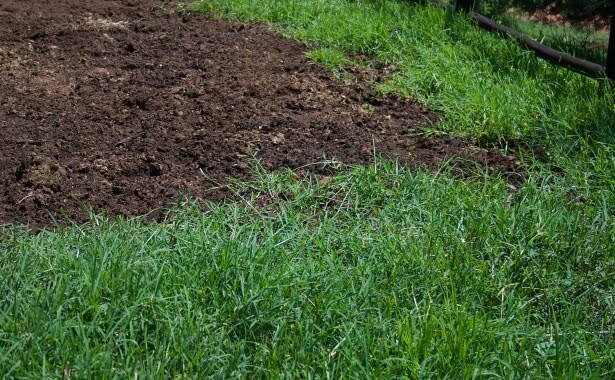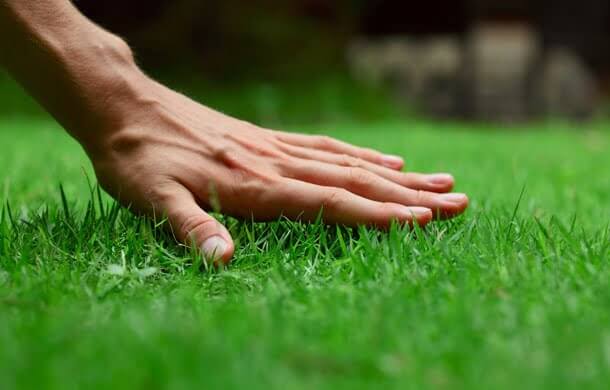Stunning Lawns Made Easy with Top Dressing Lawn Techniques
The essence of top dressing lawn care lies in replenishing soil organics. How to apply lawn dressing efficiently is a key factor in achieving a lush, healthy lawn. Applying lawn dressing not only revives and stimulates new grass growth, leading to an immediate enhancement in lawn appearance but also significantly improves soil structure. This fosters future microbial activity, ensuring top performance throughout the season.
How to Apply Lawn Dressing – Step-by-Step
Prepare Your Lawn: For optimal results, start by mowing your lawn short. If possible, scarify to remove dry, dead grass, which helps the lawn dressing penetrate the soil more effectively.
Fertilize First: Before applying the lawn dressing, evenly spread fertilizer over the dry lawn. This prepares the ground for the top dressing and ensures better nutrient absorption.
Applying the Dressing: Use top soil for grass as your lawn dressing. Spread it evenly across the lawn, ensuring that the tips of the grass are still visible. The required quantity depends on your lawn type and grass length; typically, a 30dm3 bag covers about 3m2.
Water Thoroughly: After applying the dressing, water your lawn well. This helps dissolve the fertilizer and kickstarts the growth of your grass. Continue regular watering until the lawn is fully established.
Managing Weeds in Your Lawn While Applying Lawn Dressing
For lawns with existing weeds, avoid mowing immediately. Instead, apply a selective broadleaf herbicide and wait for at least a week before mowing. This allows the herbicide to effectively target the weed tissue.
Optimal Timing for Top Dressing Lawn
The best time for top dressing lawn with lawn dressing is during early spring, specifically August and September. However, it’s beneficial at any time of the year and will significantly enhance your lawn’s growth. A second application in March or April is advisable to suppress weed growth and maintain a healthy, robust lawn throughout the winter.

Tips on How To Apply Lawn Dressing:
Understand the Process: Grasping how to apply lawn dressing is crucial. This technique involves spreading a thin layer of compost or soil over your grass. The purpose is to improve the soil quality beneath your grass, aiding in better root growth and enhancing the overall health of your lawn. Before you start, research the right methods and materials suited for your lawn type, ensuring that the dressing complements your soil’s needs.
Choose the Right Material: Selecting the right top soil for grass or a suitable lawn dressing mixture is paramount. The ideal material should be finely textured, rich in nutrients, and without any weed seeds or debris. High-quality topsoil can improve soil structure, promote better drainage, and enhance nutrient content, providing your lawn with a solid foundation for growth.
Best Time for Application: Timing is essential when top dressing lawn. The optimal period is when your grass is in its peak growing phase, usually in early spring or early fall. This timing allows the grass to recover quickly from the stress of top dressing and take full advantage of the added nutrients and improved soil structure.
Prepare Your Lawn: Proper preparation of your lawn before applying the dressing is key. Mowing your lawn to a shorter length and removing any thatch or debris ensures that the dressing makes direct contact with the soil, allowing for better integration. This step is crucial for enhancing the effectiveness of the lawn dressing.
Apply Evenly: The uniform application of lawn dressing ensures that all areas of your lawn benefit equally. Using a rake or a spreader can help distribute the dressing evenly. The layer should be thin enough (not more than ¼ inch) to avoid suffocating the grass while providing enough coverage to benefit the soil.
Water Adequately: After applying lawn dressing, it’s important to water the lawn. This helps the soil and dressing to settle and encourages the grass to grow through the new layer. Proper watering also helps integrate the dressing into the existing soil, enhancing its effectiveness.
Regular Maintenance: Continue with regular lawn care practices, such as watering, mowing, and fertilizing, after applying the dressing. This ongoing maintenance helps the lawn adjust to the new layer of soil and promotes healthy, vigorous growth, ensuring that the benefits of top dressing are fully realized.
Patch Bare Spots: If your lawn has bare patches, top dressing lawn offers an excellent opportunity to address these. Apply a slightly thicker layer of top dressing in these areas and sow new grass seeds. This not only helps in filling the bare spots but also improves the soil quality, aiding in the germination and growth of new grass.
Monitor and Adjust: After applying lawn dressing, monitor your lawn’s response. Look out for signs of improvement or any issues that may arise. If you notice areas where the grass isn’t responding as well, you may need to adjust your watering or maintenance routine. This ongoing observation helps in achieving the best results from your lawn dressing efforts.
Repeat as Necessary: Depending on the initial condition of your lawn and the effectiveness of the dressing, you might need to repeat the process annually or bi-annually. Regular top dressing is particularly beneficial for lawns with poor soil quality, as it gradually improves the soil structure and health over time, leading to a more robust and resilient lawn.
How to Apply Lawn Dressing Q&A
Popular questions and answers on the topic of applying lawn dressing.
When Should I Dress My Lawn?
The ideal time to dress your lawn is during its active growth phases, typically in the early spring or early autumn. This allows the grass to recover and utilise the nutrients from the dressing efficiently. Avoid lawn dressing during extreme weather conditions like drought or frost, as the grass might be too stressed to benefit from the treatment.
When Should I Put Lawn Dressing on in South Africa?
In South Africa, the best time to apply lawn dressing is at the start of the growing season, which is usually in early spring (August to September). This period is optimal as the weather conditions promote rapid grass growth and recovery post-dressing.
How Do I Apply Lawn Dressing?
To apply lawn dressing, first mow the lawn and remove any thatch or debris. Spread a thin layer of top soil for grass evenly across the lawn, ensuring it’s about 2-3 cm deep. Use a rake to gently work the dressing into the soil, making sure not to cover the grass completely. This helps in better soil integration and grass growth.
How Often Should I Water My Lawn After Dressing?
After dressing your lawn, water it thoroughly to help the dressing settle into the soil. For the next few weeks, keep the soil consistently moist but not waterlogged. This means watering every few days, depending on the weather conditions, to ensure the grass roots receive enough moisture to grow through the new dressing.
What Should I Top Dress Lawn With?
The best material for top dressing your lawn is a balanced blend of sand, peat, and loam. This mixture provides a good balance of drainage, aeration, and nutrient retention, which is beneficial for grass growth. Ensure the mixture is free of weeds and debris for optimal lawn health.
Can You Put Soil on Top of Grass?
Yes, you can put soil on top of grass as part of a top dressing process. The key is to apply it thinly and evenly, ensuring that the grass blades are still visible. This practice helps improve the soil quality and encourages healthier grass growth.
Which Sand for Top Dressing Lawn?
For top dressing a lawn, use a medium-coarse, washed sand. This type of sand improves soil aeration and drainage without compacting over time. Avoid using fine sand or building sand as they can lead to soil compaction and poor grass growth.
How Late Can I Top Dress My Lawn?
The latest you should top dress your lawn is in the early autumn, before the onset of cold weather. Doing it too late in the season when the grass is entering dormancy can hinder its ability to recover and benefit from the dressing. The exact timing can vary depending on your climate and grass type.

Parts of This Article Where Provided by Earth to Earth



